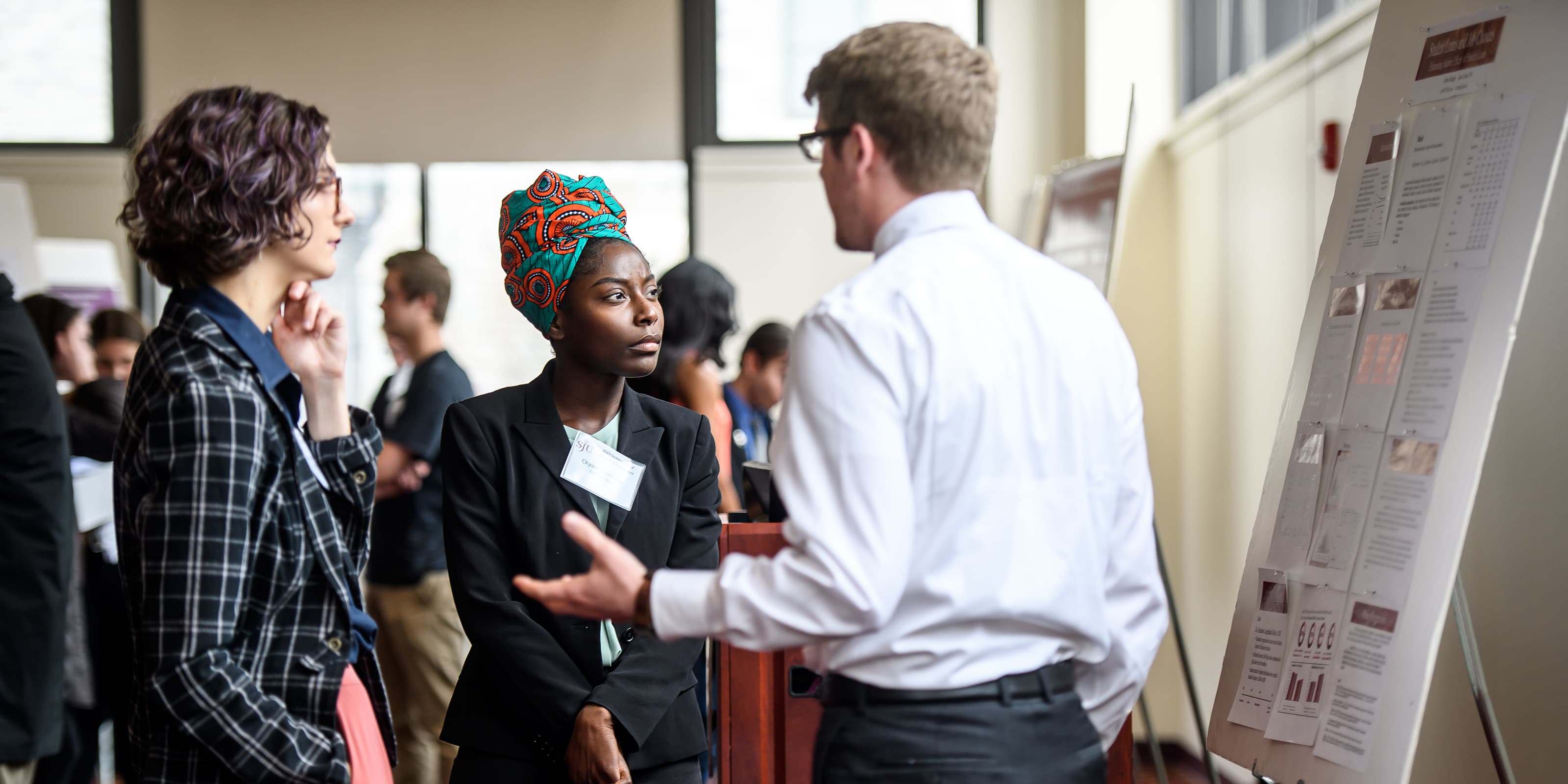Movement Matters: How Exercise Supports People With Autism
Meredith Robertson, BA ’25, Joseph McCleery, PhD, and alumna Rachel Rivera, MS ’20, embarked on research to discover how exercise improves quality of life for individuals with autism while considering barriers to exercise for the autistic population.

On a mission to find how exercise improves quality of life for the autistic population, Meredith Robertson, BA ’25 — who is on the spectrum herself — helped to uncover some important answers while also identifying significant gaps in the research. Together with Joseph McCleery, PhD, assistant professor of psychology and academic director of Saint Joseph’s University’s Kinney Center for Autism Education and Support, and alumna Rachel Rivera, MS ’20, the psychology major and Kinney SCHOLAR’s work became a published paper in Current Psychiatry Reports.
So, in what ways is exercise helpful for individuals with autism? And how can it be used to improve the lives of autistic people? Robertson and McCleery dive into the research.
Q: What inspired you to research the impact of exercise on the quality of life for those with autism?
Robertson: When reviewing the existing literature, we found that there is very limited randomized controlled trials (RCT) research evidence on exercise intervention approaches or impacts for autistic adults, autistic women and girls, or for autistic people with co-occurring intellectual disabilities. Additionally, we found there is very limited RCT research evidence on exercise intervention for reducing negative emotional symptoms (e.g., anxiety, depression) for any autistic population.
Additionally, participatory research (research that includes the studied population in the research process) is important for developing interventions that autistic people can access, will use and which will result in truly meaningful improvements in their functioning, experiences and quality of life.
Q: What are some of the key findings in the paper? Was there anything that surprised you?
Robertson: The main findings are that exercise intervention programs improve social and communication skills and improve sleep-related behavior for autistic children and adolescents. These programs also improve executive functioning skills and may be helpful for improving physical health for autistic children. This is consistent with what we expected, as exercise has been shown to be an effective intervention for improving a number of these aspects of functioning in other populations.
McCleery: It was somewhat surprising, and also disappointing, to learn that there was no convincing evidence from clinical trials that exercise improves symptoms of anxiety or depression for autistic people. Extensive research on other populations indicates that exercise significantly reduces anxiety and depression, and many autistic people struggle with both of these. So, it is really important that more research is conducted in this area in order to identify exercise programs that reduce these symptoms and experiences.
Q: What types of exercises have been found to be most effective?
McCleery: An interesting part of our literature review was that positive effects were observed across a variety of different physical activity types. There is literature suggesting that different types of physical activity (e.g., aerobic, motor and focus, weight training, etc.) can often produce different effects. We didn’t notice as strong of a distinction in the autism intervention studies that we reviewed. One possibility for this might be that autistic people may have lower overall physical activity levels and, therefore, they may gain benefits from almost any type of physical activity. This being said, we also found that some benefits, such as reduced anxiety, may ultimately require more specific or more intense physical activities.
5 Tips for Incorporating Exercise Into Your Daily Routine
- Use cues to encourage exercise, such as setting reminders on your devices for when you have time and ability to exercise, and recognizing onset of stress early and using exercise proactively to see if it eases your symptoms.
- Reflect on the barriers you experience when it comes to participating in or committing to various exercise options. For example, commit to an active and reflective approach to trying out different options until you find the right physical and social environment for your preferred exercise activities.
- Pick a type of exercise that works for you. Find something you enjoy doing.
- Start small and build up. Even 15 minutes of exercise a day, or 60 minutes two to three times per week, can improve your health and well-being.
- Talk with friends, family and others to identify ways to discover different exercise options that might be the best fit for you.
Autistic people face many of the same barriers to physical activity as other people, as well as some additional barriers such as sensory sensitivities. To learn more about barriers and opportunities for exercise for the autistic population, read the team’s research article.



